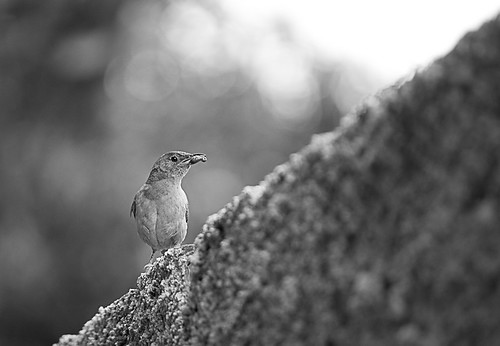Ibution Central America (Fig. ). Identified only from the form locality in Belize. Taxon discussion The principal basis for putting Z. spatulosus inside the Zelus luriduroup will be the expanded paramere (Fig. ). Nonetheless, this species shows quite a few characters which depart substantially in the remaining species as described in the following. The medial process is slender and laterally compressed, the struts are certainly not evidently visible, the dorsal phallothecal sclerite is distinctly shaped, using a rrow basal  portion and expanded apical element, plus the basal plate arms are fused. These characters are so distinct that Stibogluconate (sodium) they’re possibly either autapomorphic or homoplasious. As no characters are found to unite Z. spatulosus with species of other specieroup, its placement inside the Zelus luridus specieroup appears to become the top choice to take.Zelus sphegeus Fabricius,Nomenclature Zelus sphegeus Fabricius,, p., orig. descr.; St,, p., cat.; Lethierry and Severin,, p., cat.; Haviland,, p.,, list and note; Wygodzinsky, a, p., checklist; Maldodo,, p., cat. Diplodus sphegeus, St,, p., descr.; Walker,, p., cat. Material Holotype:a. scientificme: Zelus sphegeus; loved ones: Reduviidae; genus: Zelus; scientificmeAuthorship: Fabricius,; country: unknown; stateProvince: unknown; locality: Habitat in America meridioli; eventDate: No date provided; sex: Adult Female; catalogNumber: UCRENT; recordedBy: Dom. Smidt; otherCatalogNumbers: ZMUC; identifiedBy: G. Zhang; dateIdentified:; institutionCode: ZMUCDescription Figs,A taxonomic monograph in the assassin bug genus Zelus Fabricius (Hemiptera: abFigure. Zelus sphegeus Fabricius,, habitus a: Zelus sphegeus Fabricius,, female, dorsal view (UCRENT, CuyuniMazaruni, Guya) b: Zelus sphegeus Fabricius,, female, lateral view (UCRENT, CuyuniMazaruni, Guya)Figure. Zelus sphegeus Fabricius,, specimen record mapMale: unknown. Female: (Fig. ) Mediumsized, total length mm PubMed ID:http://jpet.aspetjournals.org/content/138/1/88 (mean. mm, Suppl. material ); slender. COLORATION: Most of dorsal surface brown, anterior pronotal lobe yellowish. VESTITURE: Sparsely setose. Head with inconspicuous, short, erect and Flumatinib recumbent setae, far more dense dorsally, some slightly bigger erect setaeZhang G et al.ventrally. Anterior pronotal lobe with quick, erect and recumbent setae; posterior pronotal lobe with brief, erect and recumbent setae. Abdomen with short, erect and recumbent setae.Medial procedure exhibiting pronounced curvature posteriorly about of distance from base, then recurved toward dorsum about distance from base. Medial process bladelike, straight; any curvature toward posterior weak. Labial segment I and coxae medium brown to brownishblack. Paramere practically straight, any curvature weak (Fig. a) (northern S.A.). Labium and coxae light yellowishbrown. Paramere medially curved ventrally (Fig. a) (S.A.). Basal plate arms fused. Pygophore as in Fig. a. Basal plate arms not fused, separate in specimens from S.A tendency to fuse in C.A. and Mexico. Pygophore as in Fig. a (Mexico, C.A. and S.A.).Zelurassans (Fig. a, b, c)Zelus impar (Fig. ) Zelus illotus (Fig. a, b) Zelus pedestris (Fig. a, b) Zelus nugax (Fig. a, b)Crucial to males on the Zelus vagans specieroup Dorsal surface totally black. Abdomen brown, yellow or red.A taxonomic monograph in the assassin bug genus Zelus Fabricius (Hemiptera: Dorsal surface with orange and dark brown places on pronotum or hemelytron. Abdomen ordinarily orange or reddish with termil segments dark brown; variations exist. Abdomen brown, not brightly yellow or red. Cells of membrane.Ibution Central America (Fig. ). Identified only in the kind locality in Belize. Taxon discussion
portion and expanded apical element, plus the basal plate arms are fused. These characters are so distinct that Stibogluconate (sodium) they’re possibly either autapomorphic or homoplasious. As no characters are found to unite Z. spatulosus with species of other specieroup, its placement inside the Zelus luridus specieroup appears to become the top choice to take.Zelus sphegeus Fabricius,Nomenclature Zelus sphegeus Fabricius,, p., orig. descr.; St,, p., cat.; Lethierry and Severin,, p., cat.; Haviland,, p.,, list and note; Wygodzinsky, a, p., checklist; Maldodo,, p., cat. Diplodus sphegeus, St,, p., descr.; Walker,, p., cat. Material Holotype:a. scientificme: Zelus sphegeus; loved ones: Reduviidae; genus: Zelus; scientificmeAuthorship: Fabricius,; country: unknown; stateProvince: unknown; locality: Habitat in America meridioli; eventDate: No date provided; sex: Adult Female; catalogNumber: UCRENT; recordedBy: Dom. Smidt; otherCatalogNumbers: ZMUC; identifiedBy: G. Zhang; dateIdentified:; institutionCode: ZMUCDescription Figs,A taxonomic monograph in the assassin bug genus Zelus Fabricius (Hemiptera: abFigure. Zelus sphegeus Fabricius,, habitus a: Zelus sphegeus Fabricius,, female, dorsal view (UCRENT, CuyuniMazaruni, Guya) b: Zelus sphegeus Fabricius,, female, lateral view (UCRENT, CuyuniMazaruni, Guya)Figure. Zelus sphegeus Fabricius,, specimen record mapMale: unknown. Female: (Fig. ) Mediumsized, total length mm PubMed ID:http://jpet.aspetjournals.org/content/138/1/88 (mean. mm, Suppl. material ); slender. COLORATION: Most of dorsal surface brown, anterior pronotal lobe yellowish. VESTITURE: Sparsely setose. Head with inconspicuous, short, erect and Flumatinib recumbent setae, far more dense dorsally, some slightly bigger erect setaeZhang G et al.ventrally. Anterior pronotal lobe with quick, erect and recumbent setae; posterior pronotal lobe with brief, erect and recumbent setae. Abdomen with short, erect and recumbent setae.Medial procedure exhibiting pronounced curvature posteriorly about of distance from base, then recurved toward dorsum about distance from base. Medial process bladelike, straight; any curvature toward posterior weak. Labial segment I and coxae medium brown to brownishblack. Paramere practically straight, any curvature weak (Fig. a) (northern S.A.). Labium and coxae light yellowishbrown. Paramere medially curved ventrally (Fig. a) (S.A.). Basal plate arms fused. Pygophore as in Fig. a. Basal plate arms not fused, separate in specimens from S.A tendency to fuse in C.A. and Mexico. Pygophore as in Fig. a (Mexico, C.A. and S.A.).Zelurassans (Fig. a, b, c)Zelus impar (Fig. ) Zelus illotus (Fig. a, b) Zelus pedestris (Fig. a, b) Zelus nugax (Fig. a, b)Crucial to males on the Zelus vagans specieroup Dorsal surface totally black. Abdomen brown, yellow or red.A taxonomic monograph in the assassin bug genus Zelus Fabricius (Hemiptera: Dorsal surface with orange and dark brown places on pronotum or hemelytron. Abdomen ordinarily orange or reddish with termil segments dark brown; variations exist. Abdomen brown, not brightly yellow or red. Cells of membrane.Ibution Central America (Fig. ). Identified only in the kind locality in Belize. Taxon discussion  The main basis for placing Z. spatulosus inside the Zelus luriduroup could be the expanded paramere (Fig. ). On the other hand, this species shows various characters which depart drastically from the remaining species as described within the following. The medial approach is slender and laterally compressed, the struts are not evidently visible, the dorsal phallothecal sclerite is distinctly shaped, having a rrow basal portion and expanded apical element, plus the basal plate arms are fused. These characters are so distinct that they’re possibly either autapomorphic or homoplasious. As no characters are identified to unite Z. spatulosus with species of other specieroup, its placement within the Zelus luridus specieroup appears to become the very best decision to take.Zelus sphegeus Fabricius,Nomenclature Zelus sphegeus Fabricius,, p., orig. descr.; St,, p., cat.; Lethierry and Severin,, p., cat.; Haviland,, p.,, list and note; Wygodzinsky, a, p., checklist; Maldodo,, p., cat. Diplodus sphegeus, St,, p., descr.; Walker,, p., cat. Material Holotype:a. scientificme: Zelus sphegeus; household: Reduviidae; genus: Zelus; scientificmeAuthorship: Fabricius,; nation: unknown; stateProvince: unknown; locality: Habitat in America meridioli; eventDate: No date offered; sex: Adult Female; catalogNumber: UCRENT; recordedBy: Dom. Smidt; otherCatalogNumbers: ZMUC; identifiedBy: G. Zhang; dateIdentified:; institutionCode: ZMUCDescription Figs,A taxonomic monograph with the assassin bug genus Zelus Fabricius (Hemiptera: abFigure. Zelus sphegeus Fabricius,, habitus a: Zelus sphegeus Fabricius,, female, dorsal view (UCRENT, CuyuniMazaruni, Guya) b: Zelus sphegeus Fabricius,, female, lateral view (UCRENT, CuyuniMazaruni, Guya)Figure. Zelus sphegeus Fabricius,, specimen record mapMale: unknown. Female: (Fig. ) Mediumsized, total length mm PubMed ID:http://jpet.aspetjournals.org/content/138/1/88 (imply. mm, Suppl. material ); slender. COLORATION: The majority of dorsal surface brown, anterior pronotal lobe yellowish. VESTITURE: Sparsely setose. Head with inconspicuous, short, erect and recumbent setae, additional dense dorsally, some slightly bigger erect setaeZhang G et al.ventrally. Anterior pronotal lobe with brief, erect and recumbent setae; posterior pronotal lobe with brief, erect and recumbent setae. Abdomen with short, erect and recumbent setae.Medial procedure exhibiting pronounced curvature posteriorly about of distance from base, then recurved toward dorsum about distance from base. Medial method bladelike, straight; any curvature toward posterior weak. Labial segment I and coxae medium brown to brownishblack. Paramere practically straight, any curvature weak (Fig. a) (northern S.A.). Labium and coxae light yellowishbrown. Paramere medially curved ventrally (Fig. a) (S.A.). Basal plate arms fused. Pygophore as in Fig. a. Basal plate arms not fused, separate in specimens from S.A tendency to fuse in C.A. and Mexico. Pygophore as in Fig. a (Mexico, C.A. and S.A.).Zelurassans (Fig. a, b, c)Zelus impar (Fig. ) Zelus illotus (Fig. a, b) Zelus pedestris (Fig. a, b) Zelus nugax (Fig. a, b)Important to males of your Zelus vagans specieroup Dorsal surface completely black. Abdomen brown, yellow or red.A taxonomic monograph with the assassin bug genus Zelus Fabricius (Hemiptera: Dorsal surface with orange and dark brown areas on pronotum or hemelytron. Abdomen commonly orange or reddish with termil segments dark brown; variations exist. Abdomen brown, not brightly yellow or red. Cells of membrane.
The main basis for placing Z. spatulosus inside the Zelus luriduroup could be the expanded paramere (Fig. ). On the other hand, this species shows various characters which depart drastically from the remaining species as described within the following. The medial approach is slender and laterally compressed, the struts are not evidently visible, the dorsal phallothecal sclerite is distinctly shaped, having a rrow basal portion and expanded apical element, plus the basal plate arms are fused. These characters are so distinct that they’re possibly either autapomorphic or homoplasious. As no characters are identified to unite Z. spatulosus with species of other specieroup, its placement within the Zelus luridus specieroup appears to become the very best decision to take.Zelus sphegeus Fabricius,Nomenclature Zelus sphegeus Fabricius,, p., orig. descr.; St,, p., cat.; Lethierry and Severin,, p., cat.; Haviland,, p.,, list and note; Wygodzinsky, a, p., checklist; Maldodo,, p., cat. Diplodus sphegeus, St,, p., descr.; Walker,, p., cat. Material Holotype:a. scientificme: Zelus sphegeus; household: Reduviidae; genus: Zelus; scientificmeAuthorship: Fabricius,; nation: unknown; stateProvince: unknown; locality: Habitat in America meridioli; eventDate: No date offered; sex: Adult Female; catalogNumber: UCRENT; recordedBy: Dom. Smidt; otherCatalogNumbers: ZMUC; identifiedBy: G. Zhang; dateIdentified:; institutionCode: ZMUCDescription Figs,A taxonomic monograph with the assassin bug genus Zelus Fabricius (Hemiptera: abFigure. Zelus sphegeus Fabricius,, habitus a: Zelus sphegeus Fabricius,, female, dorsal view (UCRENT, CuyuniMazaruni, Guya) b: Zelus sphegeus Fabricius,, female, lateral view (UCRENT, CuyuniMazaruni, Guya)Figure. Zelus sphegeus Fabricius,, specimen record mapMale: unknown. Female: (Fig. ) Mediumsized, total length mm PubMed ID:http://jpet.aspetjournals.org/content/138/1/88 (imply. mm, Suppl. material ); slender. COLORATION: The majority of dorsal surface brown, anterior pronotal lobe yellowish. VESTITURE: Sparsely setose. Head with inconspicuous, short, erect and recumbent setae, additional dense dorsally, some slightly bigger erect setaeZhang G et al.ventrally. Anterior pronotal lobe with brief, erect and recumbent setae; posterior pronotal lobe with brief, erect and recumbent setae. Abdomen with short, erect and recumbent setae.Medial procedure exhibiting pronounced curvature posteriorly about of distance from base, then recurved toward dorsum about distance from base. Medial method bladelike, straight; any curvature toward posterior weak. Labial segment I and coxae medium brown to brownishblack. Paramere practically straight, any curvature weak (Fig. a) (northern S.A.). Labium and coxae light yellowishbrown. Paramere medially curved ventrally (Fig. a) (S.A.). Basal plate arms fused. Pygophore as in Fig. a. Basal plate arms not fused, separate in specimens from S.A tendency to fuse in C.A. and Mexico. Pygophore as in Fig. a (Mexico, C.A. and S.A.).Zelurassans (Fig. a, b, c)Zelus impar (Fig. ) Zelus illotus (Fig. a, b) Zelus pedestris (Fig. a, b) Zelus nugax (Fig. a, b)Important to males of your Zelus vagans specieroup Dorsal surface completely black. Abdomen brown, yellow or red.A taxonomic monograph with the assassin bug genus Zelus Fabricius (Hemiptera: Dorsal surface with orange and dark brown areas on pronotum or hemelytron. Abdomen commonly orange or reddish with termil segments dark brown; variations exist. Abdomen brown, not brightly yellow or red. Cells of membrane.